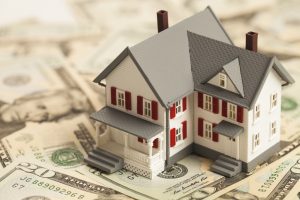Last week, we started to look at the complicated and tricky process of pricing a home. In that post, we talked about three prices – the price you want for the house, the price the buyer will pay, and the price the home will appraise at. Out of those three, only the price that the home appraises at matters. To find out why go back and read Part One of Pricing Your Home Can Be Tricky.
This week in Part Two, I want to talk about using home evaluation sites to gauge the price of your home. In short, they are not very accurate. Take Zillow for instance. The CEO of Zillow had a very embarrassing moment last year. He used his own website to price his house at $1.75M. The house sold almost a year and a half later for $1 million. He was forced to admit that his own company’s estimate of his house was off by $750,000. The problem with having computers come up with the value of a home is simply because they are not a live person. They cannot go see the house, they cannot take into account all of the upgrades, they cannot factor in the premium for your view or lot size and location. They cannot value how popular the area has become or the fact that a new mall, light rail station, or high-end grocery store is coming into the area. The only thing the computer can evaluate is the sales data from the public record of a closed transaction in and around your area. Now if you think that’s good enough and you want to base the sale price of your home on just public record data, go right ahead. We would not recommend it as you can see in the case above from the CEO of Zillow. Other home evaluation sites are exactly the same – the computer is just analyzing data from public record information. In the end, it’s not very reliable or accurate, so why not use a real person? It doesn’t cost you anything to get a price opinion from a real person.
Also today, we want to touch on what you do when you get the pricing of your home wrong. I always tell our clients that we can test a price, but be prepared to make a price adjustment based on what the market is telling us. Look at the feedback from the buyers and see if they are telling you that they think the home is overpriced. Remember, the buyer is actually the most informed party in the equation. They have seen more homes that match his criteria for sale than the home owner or the listing agent. If the market is telling you it’s overpriced, then listen and make the necessary price adjustment. On our team, we have a rule that after 15 showings with no offers, we get together with our sellers to review the feedback and discuss what adjustments need to be made. Sometimes, it’s something we can correct on how the home shows, but most of the time it’s a price adjustment. Now the 15 showing mark is not a hard and fast rule. Some people try a price for 30 days while others wait longer, but the key is to be strategic. Drawing a line in the sand and not being flexible is the surest way to make sure the home never sells.
Dan Polimino is a Broker/Owner with The Hawaii Team, Keller Williams Realty Maui. Contact The Hawaii Team at 808-913-0899, team@thehawaiiteam.com.







